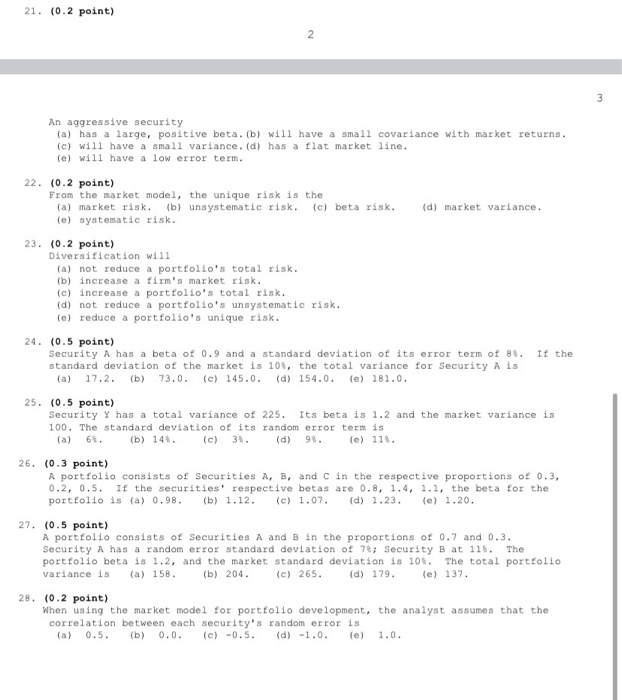Answered step by step
Verified Expert Solution
Question
1 Approved Answer
show work for problems that need it on paper pleass 21. (0.2 point) 2 3 An aggressive security (a) has a large, positive beta. (b)
 show work for problems that need it on paper pleass
show work for problems that need it on paper pleassStep by Step Solution
There are 3 Steps involved in it
Step: 1

Get Instant Access to Expert-Tailored Solutions
See step-by-step solutions with expert insights and AI powered tools for academic success
Step: 2

Step: 3

Ace Your Homework with AI
Get the answers you need in no time with our AI-driven, step-by-step assistance
Get Started


